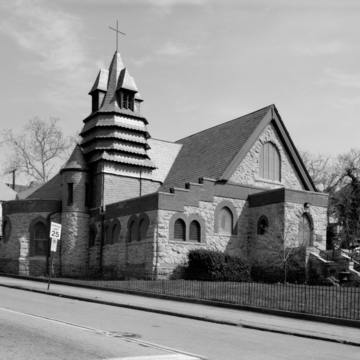This church is a masterful demonstration of the power of a medieval idiom freely interpreted. The high Episcopal faithful who first met on this site in 1870 were probably summer residents of Hazelwood in its bucolic preindustrial days. By the time the existing church was replaced with this structure, Hazelwood was in the throes of industrialization. Nonetheless, the site itself remains verdant, and, in conjunction with Wood's choice of varied and highly textured materials—stone, brick, and shingles—and its louvered tower, the church beautifully captures the rustic feel that the congregation must have requested. William Halsey Wood (1855–1897) crafts almost nothing specifically medieval here, yet it is tangible in the tradition of the free interpretations by such British designers as William Morris or Philip Webb.
You are here
Episcopal Church of the Good Shepherd
If SAH Archipedia has been useful to you, please consider supporting it.
SAH Archipedia tells the story of the United States through its buildings, landscapes, and cities. This freely available resource empowers the public with authoritative knowledge that deepens their understanding and appreciation of the built environment. But the Society of Architectural Historians, which created SAH Archipedia with University of Virginia Press, needs your support to maintain the high-caliber research, writing, photography, cartography, editing, design, and programming that make SAH Archipedia a trusted online resource available to all who value the history of place, heritage tourism, and learning.





















